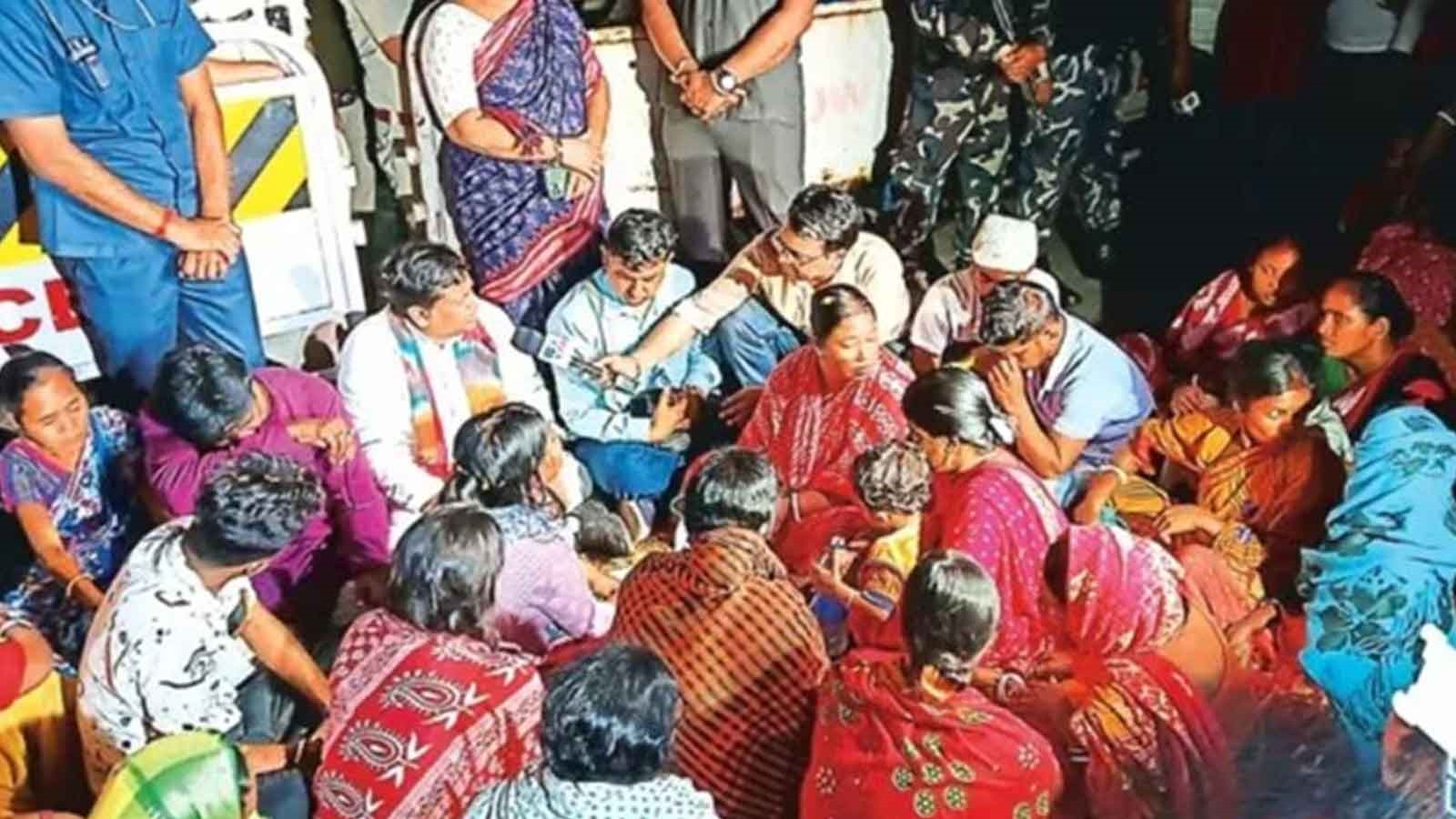Calcutta High Court Clears Way for BJP's Demonstration Against Sandeshkhali Incident With Conditions

The underlying cause of the protest, the Sandeshkhali issue, continues to be a major point of contention in West Bengal's political discourse. The district of North Paraganas has witnessed escalating tensions due to allegations against TMC leader Sheikh Shajahan regarding land grabbing and the sexual assault of local women
In a significant turn of events, the Calcutta High Court has allowed the Bharatiya Janata Party (BJP) of West Bengal to conduct a sit-in demonstration at the iconic Mahatma Gandhi's statue in the Kolkata Maidan, despite initial pushback from the city's police authorities. The planned protest, stemming from the contentious Sandeshkhali issue, has been a point of contention between the political party and law enforcement agencies.
The controversy began when the BJP West Bengal unit planned a sit-in at the Kolkata Maidan to lodge their protest against the Sandeshkhali issue. They received an NOC from the army authorities, which manages the Maidan area. But faced a setback when the Kolkata Police's Joint Commissioner, citing environmental concerns, existing prohibitory orders, and potential law and order issues, rejected their application.
Concerns included the potential disruption of ongoing Secondary and Higher Secondary examinations due to noise from microphones and loudspeakers, the possibility of law and order problems due to concurrent demonstrations, the venue's incapacity to accommodate the expected crowd of 3,000, and the risk of traffic congestion and public inconvenience. Consequently, the permission for the BJP's event was denied.
In response to the rejection, the BJP, led by Pranoy Roy, filed a writ petition (Pranoy Roy v. State of West Bengal & Ors.) challenging the decision. They contended that the denial infringed upon their constitutional right under Article 19, to peaceful assembly and freedom of expression. It was also argued that there were no schools or colleges nearby, thus negating the risk of disturbing examination candidates.
The Calcutta High Court, presided over by Justice Kaushik Chanda, in its judgment, considered these arguments alongside the state's concerns, acknowledging the constitutional guarantees of peaceful assembly and expression. The court noted, “Needless to mention that right to assemble peaceably, freedom to speech and expression are guaranteed under Article 19 of the Constitution of India. Such rights, however, may be subject to reasonable restrictions imposed by the state.”
Ultimately, the High Court issued directives for the demonstration, allowing it to proceed under specific conditions to ensure it remained peaceful and non-disruptive. These included a ban on loudspeakers, a cap on the number of participants at 150, and mandates to prevent any unlawful activities, damage to public property, or disruption to traffic and pedestrians. The sit-in was permitted for February 28 and 29, 2024, at the Mahatma Gandhi statue in Kolkata Maidan, between 10 a.m. to 6 p.m. each day.
This decision, dated February 27, 2024, was welcomed by the BJP as a victory for democratic rights. However, the Kolkata Police are on high alert to ensure the protest does not exceed stipulated boundaries.
In another development, the Calcutta High Court has clarified that central agencies such as the Central Bureau of Investigation (CBI) and the Enforcement Directorate (ED) are fully authorized to arrest Sheikh Shajahan, the main accused in the Sandeshkhali incident. The court stated that there is no legal barrier to his arrest, noting that a previous stay on the investigation only applied to a specific SIT constituted by a single bench of the CBI, which expressed concerns that the state police might compromise the investigation's confidentiality.
